LDN Patient Information
Formal Disclaimer: This pamphlet is designed to help guide patients, and enable them to make an informed choice about LDN treatment. It does not replace the need for clinical involvement. The LDN Research Trust will not support patients who obtain LDN without a prescriber’s prescription.
The LDN Research Trust is a UK registered Charity, founded in 2004, with the primary purpose of promoting research into the unlicensed use of Naltrexone at a low dose, to treat conditions and diseases. Naltrexone at a low dose is referred to as LDN (Low-Dose Naltrexone).
Naltrexone Background Information: Naltrexone has been commonly used at daily doses of 50-300mg since it was first licensed in 1984. Naltrexone has been used in lower doses to treat multiple diseases since 1988. Naltrexone is considered "standard dose" when given in daily amounts of 25mg or more and low dose when the daily dose is less than or equal to 4.5mg. When prescribed in standard dose, Naltrexone acts primarily to block opiate receptors and as such is used mainly in addictions. When used in low dose, it is now widely understood to act as an Immunomodulator. Multiple Phase I and II trials have demonstrated the efficacy of LDN as a therapeutic agent.
Mechanism of Action
When used in a lower dose has Immunomodulatory, opiate blocking and anti-tumor effects and multiple Phase I and II trials have shown efficacy.
LDN Improves Immune System Responses
- LDN creates an increase in the production of endorphins, which should result in a reduction of painful symptoms and an increased sense of wellbeing
- LDN increases levels of endorphins should be expected to stimulate the immune system, promoting an increase in the number of T lymphocytes. This effect was first documented by Dr. Bihari in New York. This increase in T-cell numbers apparently restores a more normal balance of the T-cells. The effects of the disease process are significantly reduced.
- LDN may also act directly on these immune cells to stimulate or restore normal immune functions.
Cancer
- Intermittent Dosing with LDN causes increased cell death in certain cancers, and increases cell sensitivity to chemotherapy agents.
- Certain cell types treated with LDN up regulate genes that are responsible for cell death. (BAD and BIK1)
- Certain Tumor Cells pre-treated with intermittent LDN dosing are far more likely to be killed by chemotherapy drugs.
- LDN seems to have a direct cytotoxic effect on cancer cells, via a P13 kinase, cyclin P21 and downstream G-Protein coupled receptor routes.
Opiate Blockade for short period (4-6 hours)
- Levo Naltrexone molecule binds to opiate receptors
- Causes a rebound-increase of endorphin release.
- Increases sensitivity of existing opiate/endorphin receptors.
- More Opiate receptors are formed to capture endorphins, after LDN treatment.
Which diseases are being treated with LDN?
This list is not exhaustive and patients are directed to the LDN Research Trust website for more information https://www.ldnresearchtrust.org/conditions
- Autoimmune Hepatitis
- Inflammatory Bowel Disease
- Multiple Sclerosis
- CFS/ME
- Lyme Disease
- Hashimoto's
- Grave's
- Complex Regional Pain Syndrome (CRPS) Parkinson's Disease
- Diabetes Type I
- Vitiligo
- Scleroderma
- Psoriasis
- Anxiety and Depression
- PCOS
- Melanoma
- Nerve Pain
- Glioblastoma
- Esophageal and Oral Cancers
- Non-Small Cell Cancer
- Breast Cancer
- Multiple Myeloma
- Lymphoma
- Ovarian Cancer
- Renal Cell Cancer
- Colorectal Cancer
- Duodenal and Stomach Cancer
- Uterine Cancer
- Hepatic Cancer
- PTSD
- PMDD
- PCOS
Fertility (based on the research by Dr. Phil Boyle, who is the Director of the NaPro Fertility Care Clinic in Dublin, Ireland and the President of the International Institute for Restorative Reproductive Medicine)
How to obtain LDN
Not all medical professionals are aware of LDN and its potential benefit. Not all Health Practitioners are prepared to prescribe LDN. It does help to have a knowledgeable LDN prescriber working with you. The LDN Research Trust has a list of LDN Prescribers in the US, which can be found here: https://www.ldnresearchtrust.org/LDN_Prescribers. The LDN Research Trust works hard to maintain a support network for prescribers in the US through the regular conferences and media events.
LDN is not generally covered by insurance plans, but LDN is an affordable prescription, which can usually be obtained through your local Compounding Pharmacy (https://www.ldnresearchtrust.org/ldn-pharmacists).
How to use
Read this Leaflet before you use this medicine. It includes information that might be especially important for you.
- Keep this Leaflet. You may need it again
- Ask your pharmacist or doctor for more advice on LDN, if you need it. LDN comes in several forms: tablets, capsules, liquid, sublingual drops, and as a topical cream.
Consult your doctor prior to using this medication if you are currently taking long acting opiate medicines like codeine, tramadol, morphine, fentanyl or oxycodone. Do not use this medicine if you are pregnant, or breastfeeding without informing your doctor.
- Dosing Options for LDN - For many conditions, your prescriber will usually start treatment at a low-dose and increase gradually over a period of weeks until you are stable at your goal dose ("Go-Low, Go-Slow"). Starting dose can vary from 0.5 mg to 1.5 mg and is increased up to 4.5 mg, which is the maximum dose for Low Dose Naltrexone - although you may have a lower goal dose per your provider's instructions.
- LDN dosing for patients with chronic pain conditions will start at an Ultra-Low Dose and you will take the medication twice daily, separating it by 4-6 hours from short acting opioid medications.
- For cancer patients, the dose should get to 4.5mg, or the goal dose, daily for 7 days before starting an "on/off cycle." An "on/off cycle" consists of 3 days on and 3 days off LDN continuously, which is typically the most appropriate cancer dosing, although your provider may adjust dosing as necessary. In cancer patients, combining a cannabinoid (CBD) or Sativex (THC/CBD) on the 3 days off, seems to enhance the anti-tumor effect. The 3 days off should fall directly before chemotherapy treatment. No chemotherapy agents are currently contraindicated assuming standard tests are done, however, LDN should not be taken during treatment with immune checkpoint inhibtors (e.g. Opdivo or Keytruda -- PD1 inhibitors)
Storing the Medicine - LDN Liquid should be stored in the fridge once opened and can last 30 days, or 12 months unopened. Capsules should be stored at room temperature in their original container for up to 6 months. All forms of LDN will be labeled with a specific expiration date by your Compounding Pharmacy.
Only obtain LDN via a doctor’s prescription and a reputable pharmacy - LDN is extensively counterfeited all over the world so it is not safe to purchase it from websites willing to sell it to you without a prescription—it is likely to be fake, or even dangerous, and it is illegal.
Possible Side Effects
LDN is well tolerated in most patients. However, care should be taken to titrate dose up slowly to avoid side effects.
Common:
- Sleep disturbances
- Mild headache
- Mild agitation
- Nausea/GI effects - consider switching to liquid sublingual LDN to bypass GI tract
- Hyperthyroidism in Hashimoto's patients
Uncommon:
- Flu-like symptoms (CFS/ME)
- Rash
- Herxheimer reactions (elevated temperature)
- Dizziness
- Increased fatigue or spasticity (Parkinson's)
These side effects are usually only present in the initial phase and can be stopped by halving the dose for 2-3 days and then continuing with titration again. The half-life of LDN is about 4-6 hours. Report any side effects to your prescriber.
For Up-to-Date Clinical Trials and References visit - https://www.ldnresearchtrust.org/ldn-clinical-trials
References
- Brown N, Panksepp J. Low-dose naltrexone for disease prevention and quality of life. Med Hypotheses. 2009;72:333-337. doi:10.1016/j.mehy.2008.06.048.
- Zagon IS, McLaughlin PJ. Naltrexone modulates tumor response in mice with neuroblastoma. Science. 1983;221:671-673. doi:10.1126/science.6867737.
- Zagon IS, McLaughlin PJ. Naltrexone modulates body and brain development in rats: a role for endogenous opioid systems in growth. Life Sci. 1984;35:2057-2064. https://www.ncbi.nlm.nih.gov/entrez/query.fcgi?md=Retrieve&db=PubMed&dopt=Citation&list_uids=6092812.
- Bihari B, Ottomanelli GA, Drury F, Ragone VP. T-cell subsets and treatment response in AIDS. AIDS Res. 1986;2(4):263-266.
- Bihari B, Finvola DM, Ragone VP, Ottomanelli GA, Buimovici-klein E. Low Dose Naltrexone in the Treatment of Acquired Immune Deficiency Syndrome. 1988; (June).
- ClinicalTrials.gov. https://clinicaltrials.gov/ct2/results?term=low+dose+naltrexone&Search=Search. Accessed January 1, 2015.
- Donahue MJ. Low-Dose Naltrexone (LDN). 1995;(4).
- Sajben N. LDN World Database. 2011. http://painsandiego.com/2011/01/19/ldnworld-database/. Accessed February 23, 2015.
- LDNScience - How Does LDN Work? https://www.ldnscience.org/low-dosenaltrexone/how-does-ldn-work. Accessed February 23, 2015.
- Grossman T. Low Dose Naltrexone (LDN) Lecture. 2014:1-10.
- The Low Dose Naltrexone Homepage. http://www.lowdosenaltrexone.org/#Are_there_any_side_effects. Accessed February 25, 2015.

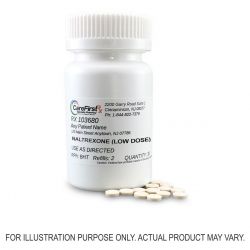
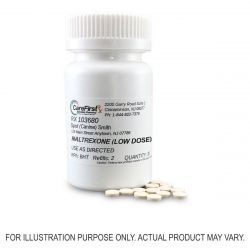
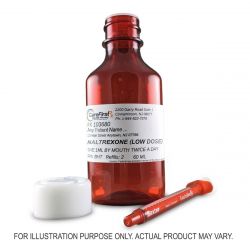
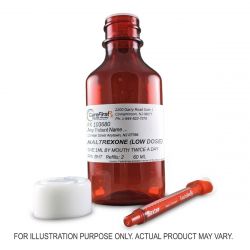
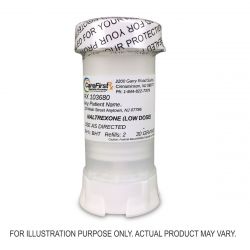
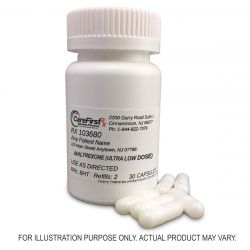
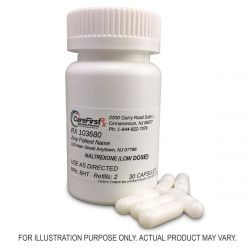


Comments